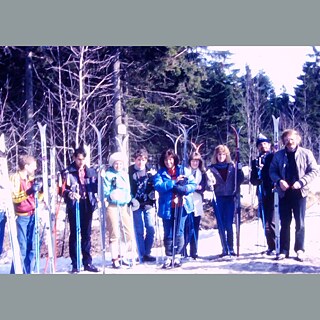The Berlin Wall Falls
As the Soviet Union weakened and East Germans fled to the West, the Berlin Wall became a political focal point. The wall, a heavily guarded concrete barrier that separated East from West, sat as a powerful symbol of Soviet control in Germany. As other Eastern Bloc nations became embroiled in revolution, protesters crowded on both sides of the wall. With the leadership of East Germany loosening restrictions several days before to quell protests, half a million Germans gathered around the East/West divide. The Berlin Wall’s destruction began soon after, with citizens on both sides attacking the symbolic divide with sledgehammers and pickaxes, chipping away at the concrete.
The Berlin Wall officially fell on November 9th, 1989. On December 22nd, 1989, the Brandenburg Gate was opened to allow West German Chancellor Helmut Kohl and East German Prime Minister Hans Modrow to greet one another. Less than a year later, the two sides were officially rejoined on German Unity Day, October 3rd, 1990.
